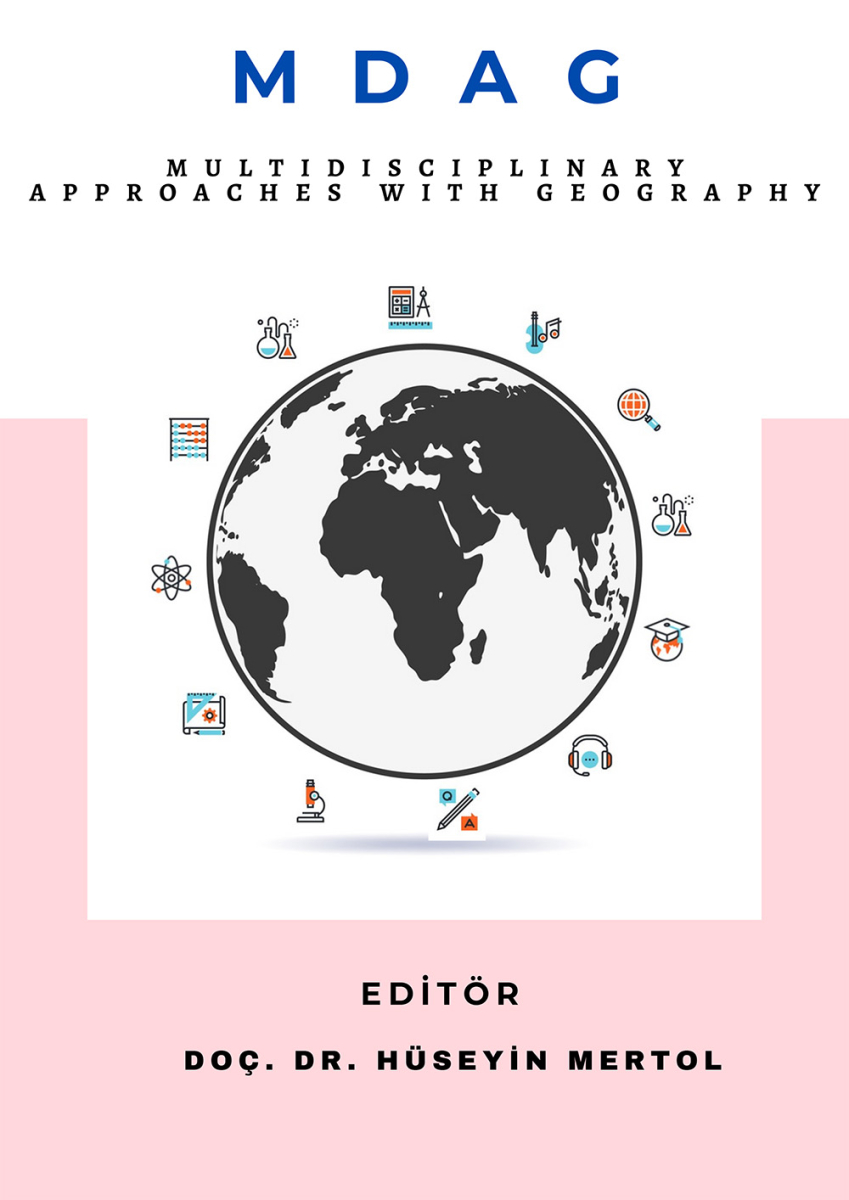Araştırma Makalesi | Açık Erişim
Multidisipliner Yaklaşımlarla Coğrafya 2023, Clt. 1(4) 327-337
Development of Attitude Towards Animals Scale for Children Aged 4-6 within the Scope of Environmental Education
ss. 327 - 337 | DOI: https://doi.org/10.29329/mdag.2023.617.5
Yayın Tarihi: Aralık 13, 2023 | Görüntüleme Sayısı: 36/118 | İndirilme Sayısı: 42/141
Özet
The aim of the study is to create a valid and reliable measurement tool that will measure the level of animal love in children aged 4-6. The research is of a methodological type. Within the framework of the determined features, a 75-item pool belonging to different dimensions of attitude, which are knowledge, emotion, and behaviour, was prepared with three expert lecturers from the fields of preschool teaching, primary school teaching and guidance and psychological counseling. After examining the clarity and comprehensibility of the prepared items, the draft of the scale was submitted for expert opinion to increase content validity. In order to get an expert opinion, it was presented to seven expert faculty members consisting of preschool teaching, measurement and evaluation, guidance and psychological counseling and veterinary medicine. According to the feedback we got from the experts, we decided to remove the items from the scale or correct them based on the agreement percentages. As a result, the scale was reduced to 47 items. Item analysis, explanatory factor analysis and confirmatory factor analysis were conducted, and Cronbach's alpha reliability coefficient was calculated to see the validity and reliability of the scale. Exploratory factor analysis (EFA) was performed, and the construct validity of the scale was assessed. The Kaiser-Meyer-Olkin (KMO) value was 0.871. When the data on the factor loadings of the scale items and the item-total correlations were examined, it was observed that the factor loads of the items in the scale vary between .445 and .848, the item-total correlations of the scale vary between .18 and .74. Moreover, the first dimension has 18 items, the second dimension has ten items, and the third dimension has four items. Then, the sample was increased to 244, and Confirmatory Factor Analysis (CFA) was conducted to determine to what extent observed variables explain latent variables and if the model obtained as a result of EFA is suitable. As a result of CFA, the number of items was reduced to 13 (three items from the cognitive dimension, six items from the affective dimension, and four items from the behavioral dimension), and the scale took its final form.
It has been observed that the internal consistency reliability values of the scale are .92 in the Cognitive Dimension, .92 in the Affective Dimension and .85 in the Behavioral Dimension. Split-half reliability coefficients are 0.84 in the Cognitive Dimension, .83 in the Affective Dimension, and .78 in the Behavioral Dimension. As a result of the validity and reliability analyses, the Attitude towards Animals Scale was found to be valid and reliable.
Anahtar kelimeler: Scale Development, Animal Love, Environmental Education
APA 7th edition
Samsunlu, O., & Bilgen, M. (2023). Development of Attitude Towards Animals Scale for Children Aged 4-6 within the Scope of Environmental Education. Multidisipliner Yaklaşımlarla Coğrafya, 1(4), 327-337. https://doi.org/10.29329/mdag.2023.617.5
Harvard
Samsunlu, O. and Bilgen, M. (2023). Development of Attitude Towards Animals Scale for Children Aged 4-6 within the Scope of Environmental Education. Multidisipliner Yaklaşımlarla Coğrafya, 1(4), pp. 327-337.
Chicago 16th edition
Samsunlu, Omer and Mustafa Bilgen (2023). "Development of Attitude Towards Animals Scale for Children Aged 4-6 within the Scope of Environmental Education". Multidisipliner Yaklaşımlarla Coğrafya 1 (4):327-337. https://doi.org/10.29329/mdag.2023.617.5
Büyüköztürk, Ş. (2002). Faktör analizi: Temel kavramlar ve ölçek geliştirmede kullanımı. Kuram ve Uygulamada Eğitim Yönetimi, 32(32), 470-483.
Ergin, D.Y. (1995). Ölçeklerde Geçerlik ve Güvenirlik. Marmara Üniversitesi Atatürk Eğitim Fakültesi Eğitim Bilimleri Dergisi, 7, 125-148.
Erkorkmaz, Ü., Etikan, İ., Demir, O., Özdamar, K., ve Sanisoğlu, S. Y. (2013). Doğrulayıcı faktör analizi ve uyum indeksleri. Turkiye Klinikleri Journal of Medical Sciences, 33(1), 210-223
Furman, W. (1989). The development of childrens social networks. Children’s Social Networks and Social support. 7; 151-172.
Kılıç, S. (2016). Cronbach's alpha reliability coefficient. Psychiatry and Behavioral Sciences, 6(1), 47.
Karagöz, Y. ve Kösterelioğlu, İ. (2008). İletişim becerileri değerlendirme ölçeğinin faktör analizi metodu ile geliştirilmesi, Dumlupınar Üniversitesi Sosyal Bilimler Dergisi, 21, 81-98.
Önal Ö, Kişioğlu A, Uskun E, Evcil F (2020). Öney Hayvan Sevgisi Ölçeği Geçerlik ve Güvenirlik Çalışması. Türkiye Klinikleri Sağlık Bilimleri Dergisi, 5(3), 625 - 634. 10.5336/Healthsci.2019-71961
Özçiftçi, S (2020). Hemşirelik bakımında etik tutum ölçeği geliştirme (Yayımlanmamış Yüksek Lisans Tezi). İzmir Katip Çelebi Üniversitesi Sağlık Bilimleri Enstitüsü, İzmir.
Sharma, S. (1996). Applied multivariate techniques, Jhonn Wiley ve Sons İnc.; 116, 112-113.
Utkugün, C. (2022). Sınıf Öğretmeni Adaylarının Hayvan Sevgisi ve Duyarlılıkları . Trakya Eğitim Dergisi , 12 (3) , 1515-1535 . Doı: 10.24315/Tred.995991
Yılmaz, B. (2019). Evcil hayvanlar ve çocuklar hakkında bilinmesi gerekenler. https://www.kidsgourmet.com.tr/evcil-hayvanlar-ve-cocuklar-hakkinda-bilinmesi-gerekenler/ sayfasından erişilmiştir.
